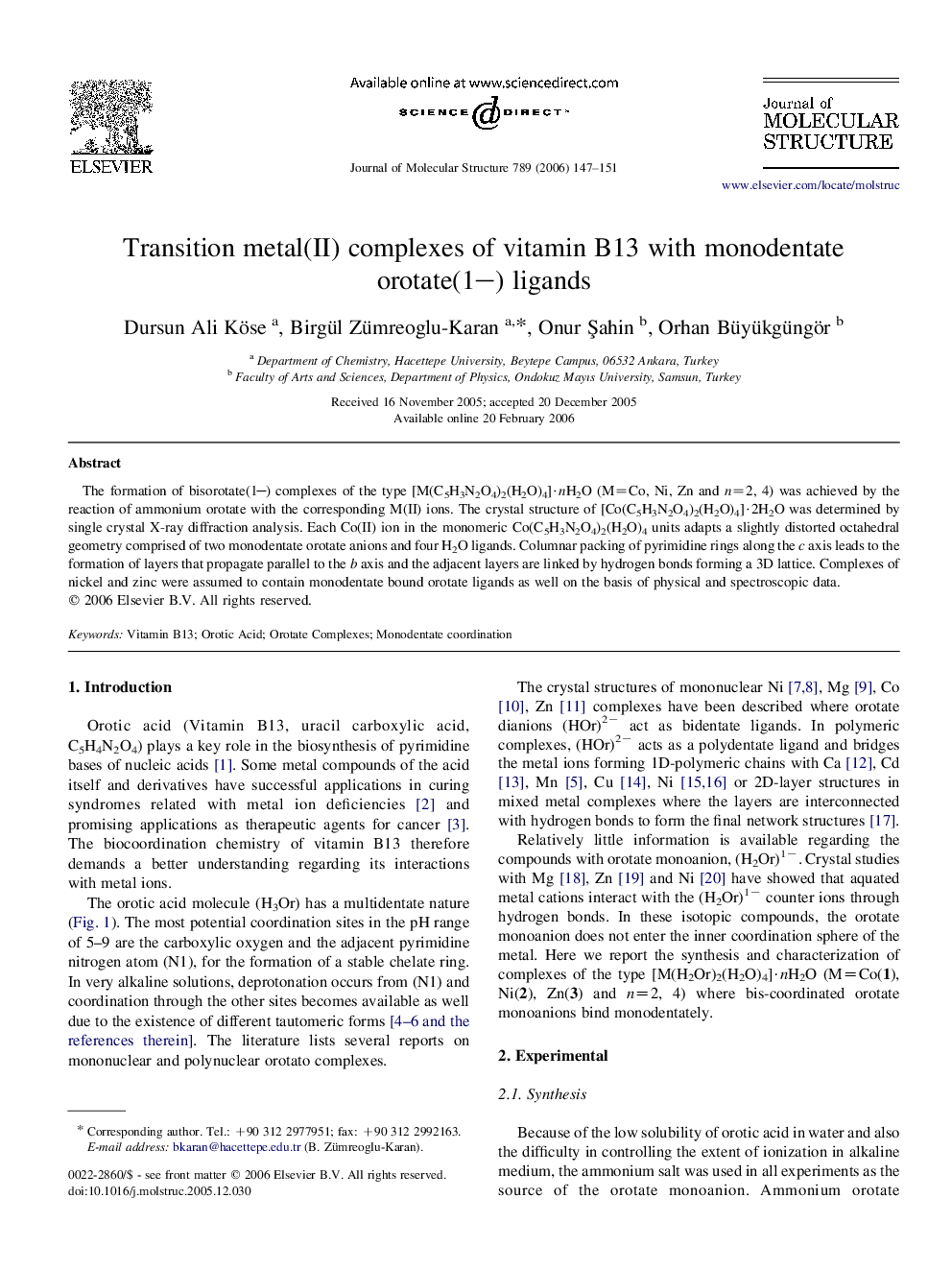| Article ID | Journal | Published Year | Pages | File Type |
|---|---|---|---|---|
| 1407724 | Journal of Molecular Structure | 2006 | 5 Pages |
The formation of bisorotate(1−) complexes of the type [M(C5H3N2O4)2(H2O)4]·nH2O (M=Co, Ni, Zn and n=2, 4) was achieved by the reaction of ammonium orotate with the corresponding M(II) ions. The crystal structure of [Co(C5H3N2O4)2(H2O)4]·2H2O was determined by single crystal X-ray diffraction analysis. Each Co(II) ion in the monomeric Co(C5H3N2O4)2(H2O)4 units adapts a slightly distorted octahedral geometry comprised of two monodentate orotate anions and four H2O ligands. Columnar packing of pyrimidine rings along the c axis leads to the formation of layers that propagate parallel to the b axis and the adjacent layers are linked by hydrogen bonds forming a 3D lattice. Complexes of nickel and zinc were assumed to contain monodentate bound orotate ligands as well on the basis of physical and spectroscopic data.
